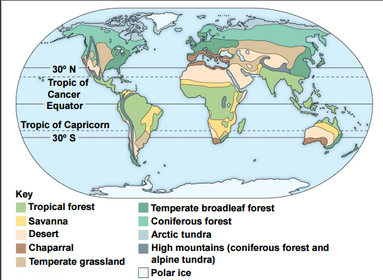Flashcards on BISC 100: Lecture 31, 32, 33, 34 :Ecology, created by Chelsi Souch on 10/08/2016.
Pinned to
38
0
0
No tags specified

|
Created by Chelsi Souch
over 8 years ago
|
|
Rate this resource by clicking on the stars below:




 (0)
(0)
Ratings (0)
| 0 | ||
| 0 | ||
| 0 | ||
| 0 | ||
| 0 |
0 comments
There are no comments, be the first and leave one below:
Close



